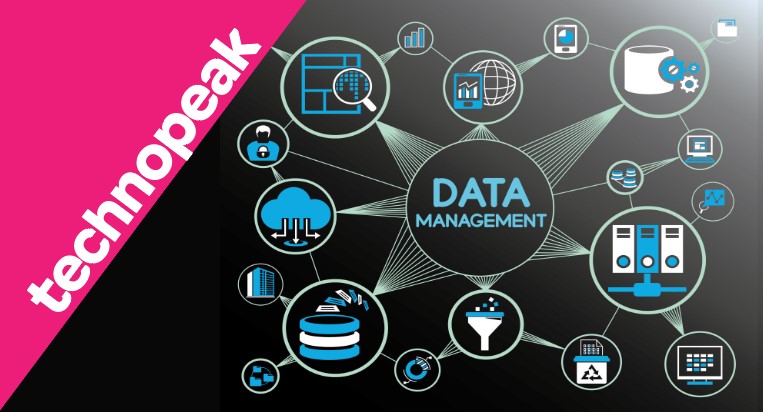Preparations to keep your enterprise data safe.
There are a lot of great things in technology development but, as always, there are some downsides, and one of them - proportional advancement of various malicious internet activities, especially cyber attacks. In the past few years, we’ve seen a rising sophistication of them and will continue their evolution in the future. That is why legacy approaches to IT safety are no longer suitable and companies need to be armed with the most advanced security tools.
The main issue that most modern cyber-attacks are highly targeted. Attackers spend weeks and months gathering information about their prey and waiting for the moment to proceed. Organizations that do not invest in their cyber threat intelligence are the weakest in the face of such situations. And we didn’t even start talking about avoiding zero-day vulnerabilities, systems endpoint’s seсurity, and so on.
Cyber Threat Intelligence
Simply speaking, Cyber Threat Intelligence (CTI) is a number of measures for the collection and processing of information about threats for further development of defense methods. Of course, most of the tools for this process are featuring AI (Artificial intelligence) and ML (Markup language). These solutions are often integrated into other security programs for accurate data processing. CTI helps businesses to be proactive rather than reactive in their approach to IT-safety.
These systems generate an enormous amount of data and it’s the analyst’s duty to make sense of it. But the final info is just irreplaceable. It provides the ability to understand most of the risks and avoid zero-day exploits. Unlike most of the technology-based ways of security data collection and processing, CTI needs not only the right tools like software and hardware but also trained specialists
However, there is a serious challenge in this aspect. According to a survey of CTI practitioners by Cybersecurity Insiders, 85% received little or no training in Open Source Intelligence (OSINT) techniques and risks.
The growing complexity of cybersecurity these days has made intelligence-based cybersecurity inevitable. It is up to businesses to invest in the right tools and in people (analysts, researchers, etc.)
Endpoint Protection
Endpoint security is the very core of cybersecurity. With the continuous spreading of working from home, it becomes way harder to guard entry points to prevent malware from getting inside of an enterprise network.
We can freely consider endpoint protection as the frontline in the cybersecurity war. And currently, the state of endpoint security appears quite bleak, according to 2020 Endpoint Security Research by Delta Risk:
- 55% of organizations have seen an increase in endpoint security risk,
- 34% of organizations experienced one or more endpoint attacks that successfully compromised data or IT infrastructure, and
- 67% believe it is moderately likely to extremely likely that they will be the victim of a successful cyberattack in the next 12 months.
The point of endpoint protection is the protection of the most valuable resource of any company - its data. As a company, you obviously do not want your data to be corrupted, compromised, or stolen. And such things like firewalls and VPN are vital for the prevention of such things.
Some of the most secure technologies to implement in endpoint protection include (but are not limited to) the following:
- SDPs: A Software-Defined Perimeter is useful for securing user remote access to network resources. An SDP is perfect for protecting IoT endpoints, which require lightweight transmissions and tend to not be adaptable to other enterprise-grade security tools.
- Next-gen VPNs: Unlike legacy tools, advanced VPNs offer comprehensive traffic visibility, enforce zero-trust principles, and are equipped with threat detection. These are very important factors for endpoint protection.
- SWGs: A Safe Web Gateway secures users from threats by enforcing the company’s cybersecurity policy. It interfaces between the user device and network access as well as scrutinizes incoming and outgoing data for malicious or just unwanted (per policy) components.
- Firewalls: Firewalls filter traffic transferred between the internet and the organization’s network instead of user devices, which endpoint protection focuses on. Both seem to perform the same functions, but they operate on different levels. A firewall is never enough.
Cyber breach response plan
There is a lot more conversation to be had about protection and so on, but what if the attack was successful? Well, the overall situation is quite depressing. Here are the results of the Cyber Security Breaches Survey 2020 conducted by the UK’s Department for Culture, Digital, Media, & Sport. The following are the most common responses to cyber breaches:
- trying to find the source
- giving people specific roles and responsibilities
- assessing impacts
- formally logging incidents
Everything is right and cool, but there’s always “but”: only 21% of companies carry out all 4 steps, while almost a third of all respondents do none of these. It might seem to be normal because the majority (64%) concentrate their efforts on preventing incidents. However, how resilient might be the whole system without Plan “B”, in case if something bad happens?
In developing a solid breach response plan, you would find the following tips helpful:
- Form a response policy that includes a risk assessment, details alert levels for various types of incidents, and defines the roles and responsibilities of each person involved in the process.
- Have emergency back-up plans to keep the business running even when a serious incident has occurred.
- Mandate that all your employees participate in an awareness training program that prepares them for incident response situations. Simulate attack scenarios and rehearse your plans.
- Following an incident, assess the breach to determine the effectiveness of your plans and to identify lessons, opportunities, and other risks.
Conclusion
It is obvious that the most optimal way to prevent intrusions is to think ahead of attackers. Nothing ensures this more than the three-pronged approach of intelligent analysis and defense, comprehensive endpoint security, and a proactive response plan in the case of an attack.


